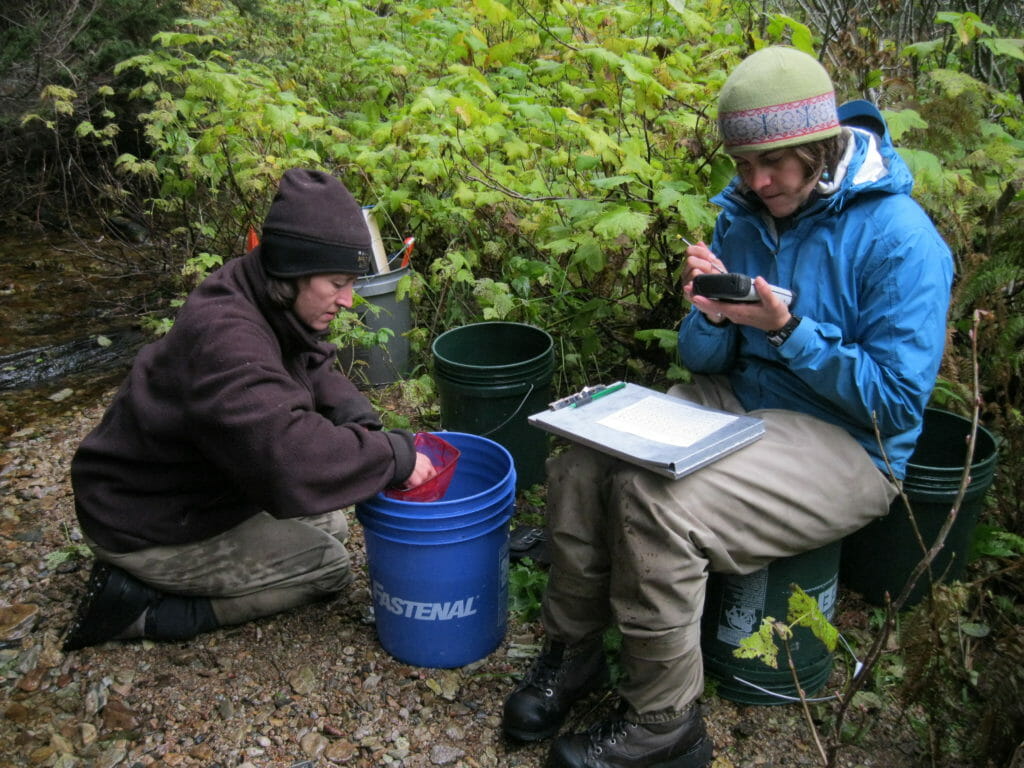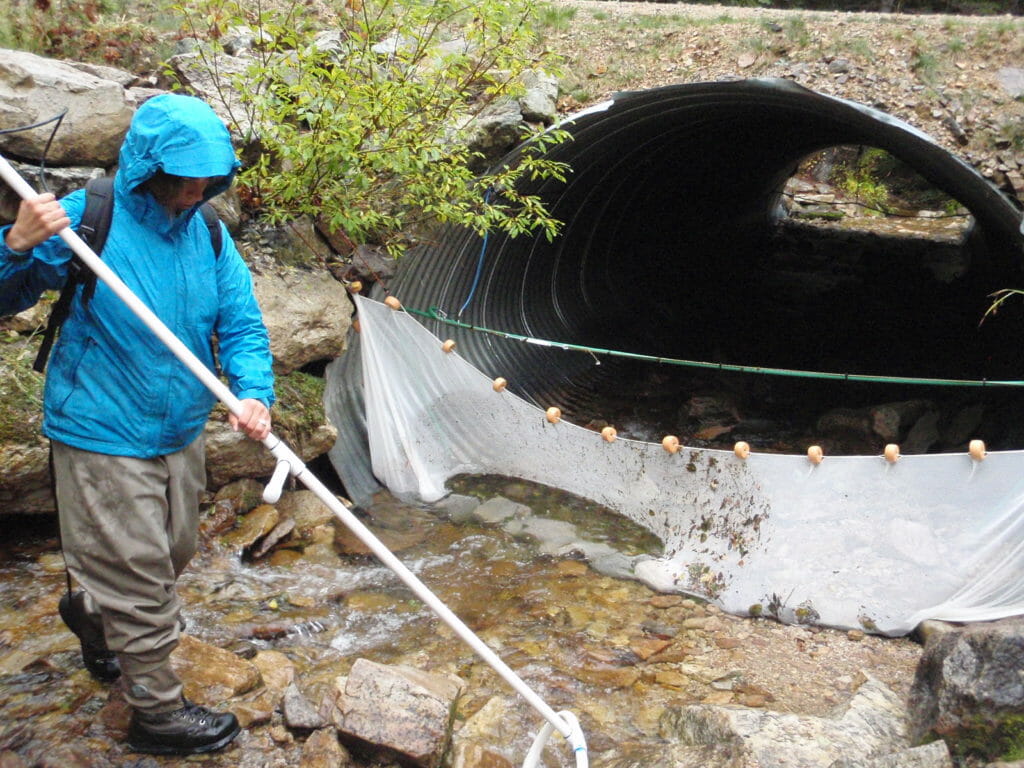
It may seem surprising, but we can tell when fish move by relating the genetic identity of individuals to their geographic location in a stream or river system. Our most recent studies have been applied to restoration effectiveness monitoring, where we aimed to verify fish movement across several restoration sites after culvert barriers had been replaced with structures designed to allow fish passage. Reconnecting isolated tributaries to larger downstream waters is one of the most effective things we can do to improve trout population resiliency. There have been few studies confirming these projects successfully enable fish passage, in part due to the difficulty of tracking fish movement.
Resources

In Lolo Creek in Montana we used pedigree analyses to reconstruct full-sibling families of young-of-year westslope cutthroat trout, a particularly difficult age-class to track given their small size. The physical locations of identified siblings in the stream were then evaluated to learn about their movement: finding full-siblings on opposite sides of the restoration sites demonstrated that young of year had moved through the new structures successfully in most cases. We also applied this “sib-split” approach and another genetic techniques to capture movement of older individuals. This information was used by the U.S. Forest Service to establish national guidelines for effectiveness monitoring of Aquatic Organism Passage projects.
In Nevada’s Maggie Creek we determined that threatened Lahontan cutthroat trout moved among three tributaries after culvert barriers were replaced with structures designed to allow passage. Interestingly, the source-population generating this movement varied over time. Pulses of movement were seemingly related to flow, emphasizing that physical connectivity depends not only on a lack of structural barriers, but also on sufficient flows to enable movement in this desert environment.


